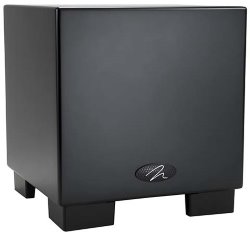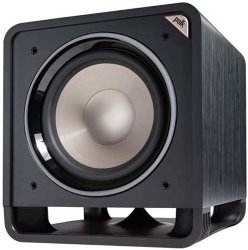MartinLogan Dynamo 700w vs. Polk Audio HTS 12
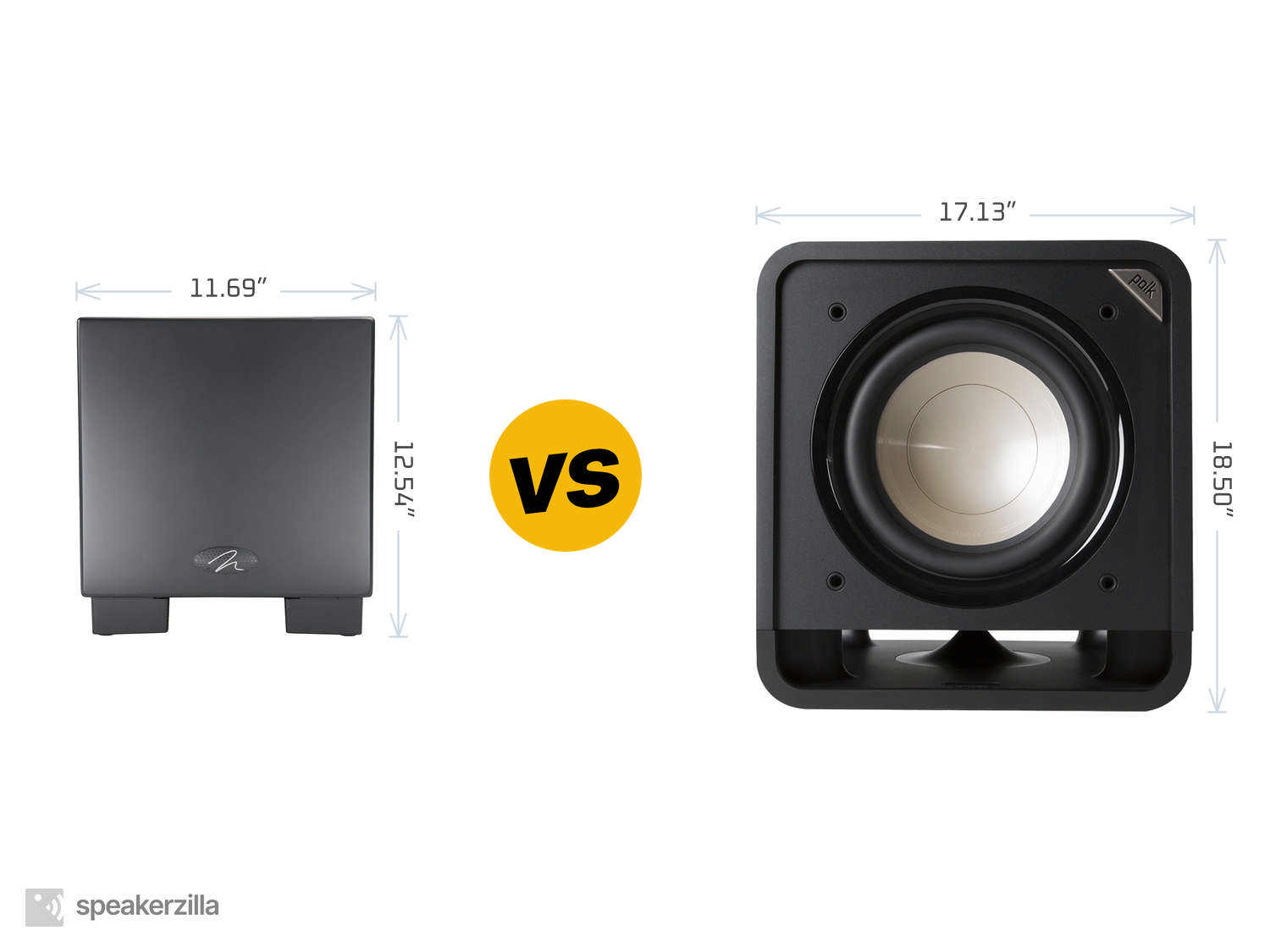
| MartinLogan Dynamo 700w 10” Wireless Subwoofer | Polk Audio HTS 12 Powered Subwoofer |
| MSRP | |
| $700 | $550 |
| Dimensions (H × W × D) | |
|
12.54” × 11.69” × 12.53” 319mm × 297mm × 318mm |
18.50” × 17.13” × 18.11” 470mm × 435mm × 460mm |
| Power Type | |
| Powered | Powered |
| Frequency Response | |
| 24-200 Hz | 22-180 Hz |
|
Amazon.com
|
Amazon.com
|
Key Takeaways
TLDR Summary: In the subterranean realm of bass, the MartinLogan Dynamo 700w and Polk Audio HTS 12 both stake their claim, but diverge in their approach. The Dynamo 700w, with its 10-inch woofer, wireless prowess, and precise room correction technology, caters to the audiophile seeking a blend of convenience and performance. In contrast, the HTS 12's 12-inch driver promises to shake the room with a more traditional wired connection, appealing to those who favor raw power and a larger driver at a typically lower price point. Ultimately, the choice hinges on personal preference for wireless functionality versus sheer size and potential output.
Speaker Comparison
Subwoofers can be the unsung heroes of a home audio setup, often overlooked yet crucial for providing the immersive, full-bodied sound that audiophiles and casual listeners alike crave. Two notable contenders in the realm of subwoofers are the MartinLogan Dynamo 700w and the Polk Audio HTS 12. Each brings its unique strengths to the table, inviting a closer look into their performance, design, and overall value. As we delve into the specifics, it's worth considering how these aspects align with your individual listening preferences and room acoustics.
MartinLogan Dynamo 700w: An Elegant Force in Bass Precision
The MartinLogan Dynamo 700w presents itself as a sophisticated piece of audio engineering. With its 10-inch polypropylene cone and high-density structure, it is designed to deliver tight, articulate bass with a finesse that is hard to rival. This subwoofer thrives on precision, making it an excellent choice for critical listeners who value clarity over sheer power in their low frequencies. The inclusion of wireless connectivity is another feather in its cap, allowing for flexible placement without the hassle of running cables across the room – a feature that is as much about convenience as it is about maintaining a clean aesthetic.
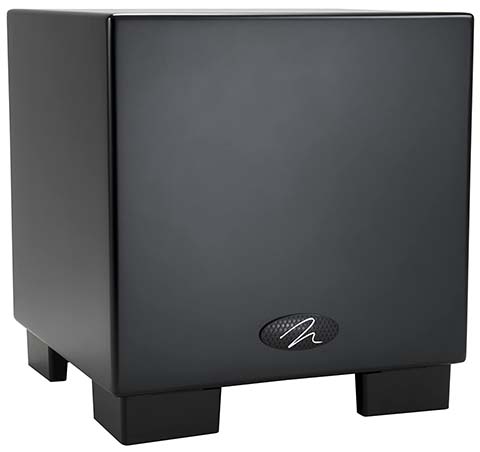
 (at Amazon.com)
(at Amazon.com)Polk Audio HTS 12: A Robust Contender with Expansive Sound
Moving on to the Polk Audio HTS 12, this subwoofer steps into the arena with a 12-inch driver, promising a more robust and expansive bass response. It's designed for those who want to feel the rumble of bass as much as hear it, making it ideal for home theater enthusiasts and lovers of bass-heavy music. The HTS 12 doesn't just play loud; it also strives to maintain clarity and depth at higher volumes, thanks to its Dynamic Balance technology. This feature helps to reduce distortion and maintain performance, ensuring that the subwoofer's power is harnessed effectively.
Design and Build: A Contrast of Styles
When it comes to design, the Dynamo 700w and HTS 12 showcase contrasting approaches. The MartinLogan subwoofer boasts a sleek, almost minimalist aesthetic, with its compact form factor exuding a contemporary vibe that can seamlessly blend into modern living spaces. Conversely, the Polk HTS 12 opts for a more traditional look with its larger cabinet and rounded edges, which might appeal to users with classic tastes or those who prefer their subwoofers to make a statement in their decor. In terms of build quality, both brands have a reputation for durability, but the MartinLogan's proprietary construction materials give it a slight edge in the premium feel category.
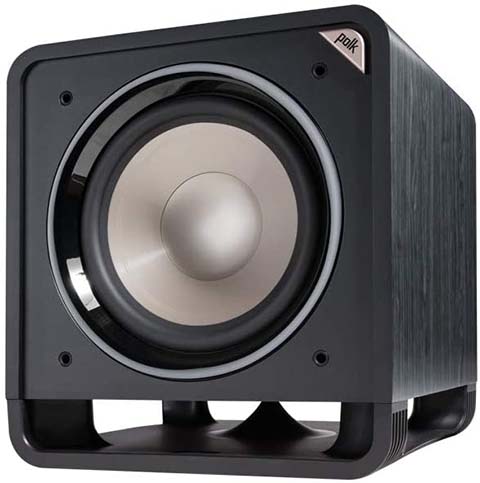
 (at Amazon.com)
(at Amazon.com)Performance in Diverse Listening Environments
Performance is where the rubber meets the road, and it's crucial to understand how these subwoofers fare in different listening environments. The MartinLogan Dynamo 700w, with its more controlled bass output, is adept at filling small to medium-sized rooms without overwhelming the space. It's also worth noting that its wireless feature can be a significant advantage for those looking to minimize cable clutter, especially in multi-purpose rooms. The Polk Audio HTS 12, with its larger driver, is better suited for larger spaces where its power can be fully appreciated without dominating the sonic landscape.
Compare to similar speakers
Ultimately, the choice between the MartinLogan Dynamo 700w and the Polk Audio HTS 12 subwoofers comes down to personal preference and intended use. If your priority is crisp, detailed bass and a subwoofer that can integrate into a sophisticated audio system without drawing too much attention to itself, the MartinLogan is an excellent choice. On the other hand, if you're after that ground-shaking, deep bass experience that adds a physical dimension to movies and music, and you have the room to accommodate it, the Polk HTS 12 will not disappoint.
Both the MartinLogan Dynamo 700w and Polk Audio HTS 12 stand as testament to their manufacturers' commitment to quality and performance. While they cater to different tastes and room sizes, each offers a compelling argument for taking your home audio experience to new depths. Whether you're upgrading an existing setup or building a new system from scratch, considering how a subwoofer complements and interacts with your room and other components is key. In the end, the right subwoofer is the one that strikes the perfect balance between your space, your tastes, and the nuances of your favorite sounds.
- MartinLogan Dynamo 700w reviews and FAQs
- Polk Audio HTS 12 reviews and FAQs
Check Current Prices: |
|
|
Amazon.com
|
Amazon.com
|
Affiliate Disclosure: As an Amazon Associate, we earn from qualifying purchases.
